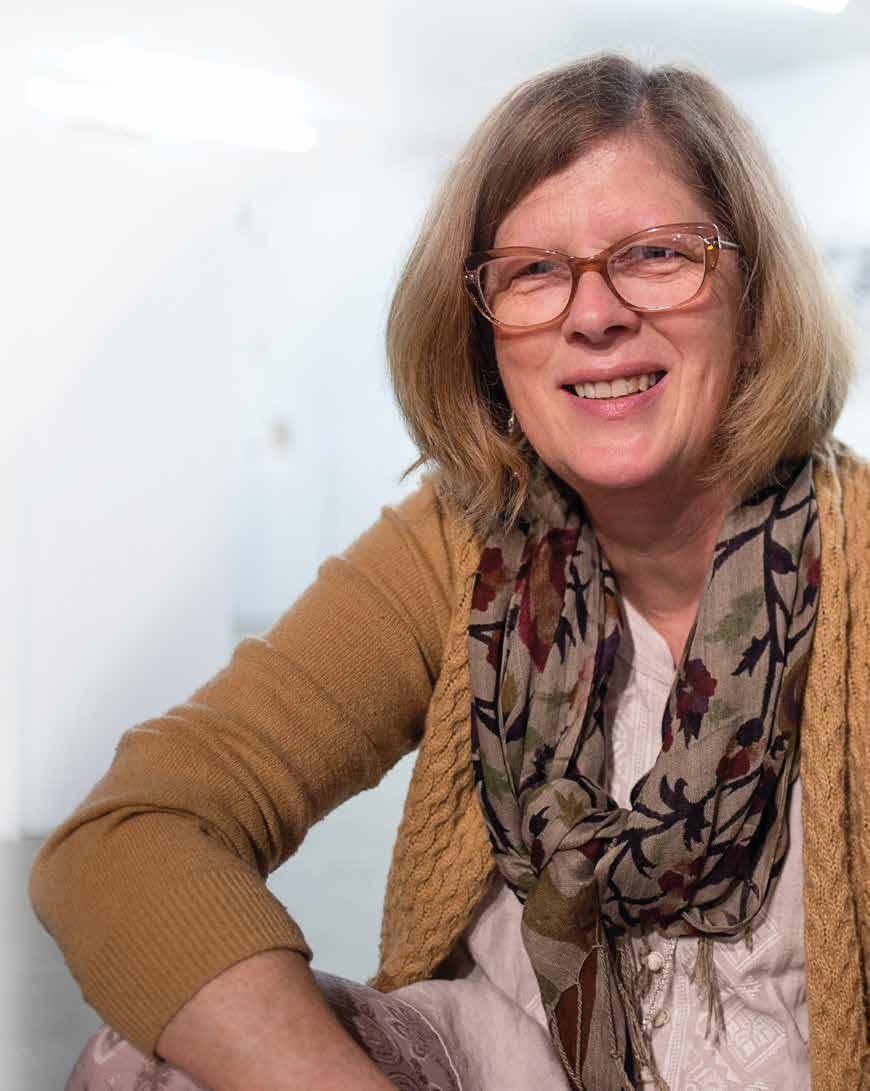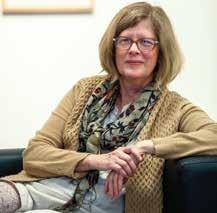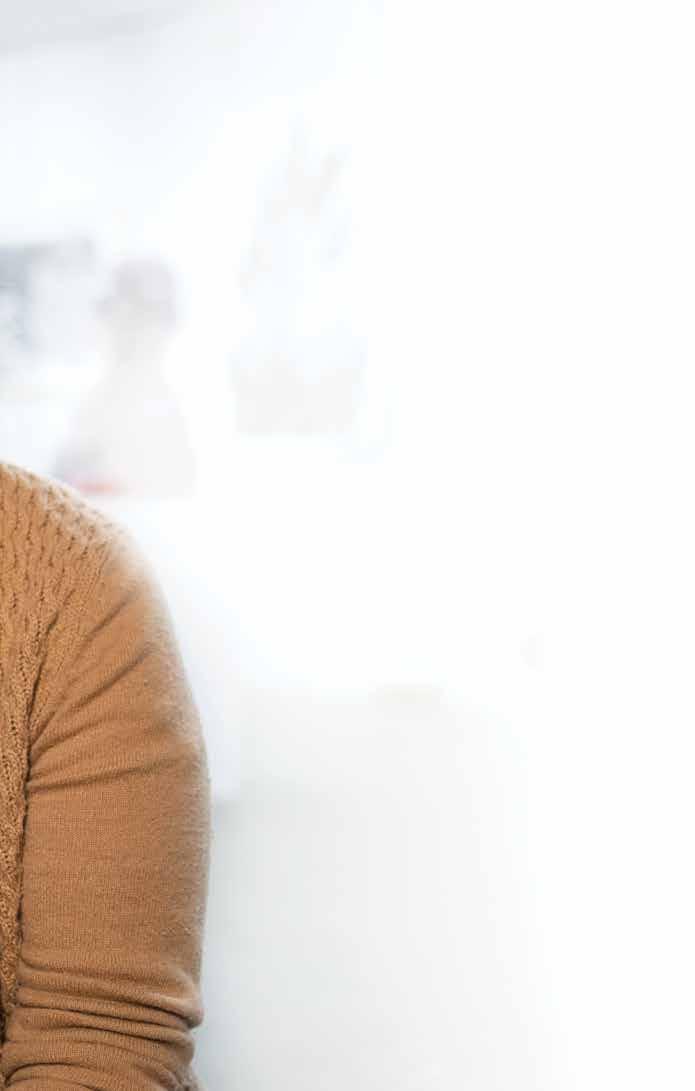
3 minute read
MAKING AN IMPRESSION: ART HISTORIAN TRANSFORMS HER CLASSROOM INTO A LABORATORY

By Kristin Brockett
MORE ABOUT DR. CHARLOTTE WELLMAN
Trained as an Americanist, Wellman teaches courses in 19th century, 20th century and contemporary art, American art, gender and theory. She has published several catalog essays on contemporary artists, and her decades-long research focuses on gender, aging and contemporary visual culture.
Brimming with excitement and curiosity, a 4-year-old girl follows her mother through the vast corridors of the National Gallery of Art in Washington, D.C., bypassing rooms that contain prints by Rembrandt and Venetian drawings from the Guardi family and heading directly to the impressionist galleries.
A world-class collection of pieces by Édouard Manet, Pablo Picasso and Mary Cassatt – her mother’s favorite artist – awaits. As they pause in front of each work, the girl gazes up at the short, broken brush strokes and unblended paint and listens intently while her mother describes the scenes that emerge.
Dr. Charlotte Wellman can’t remember the exact moment her passion for art ignited, but she points to her mother as the first in a series of teachers who fueled the flame. She enjoyed drawing from a young age, and her parents cultivated her early talents with unlimited art supplies.
“From the start it was very much about materials and understanding the physical world through touch, sensation and sight,” said Wellman, who has taught Art History courses at Edinboro since 1995. “My parents were always giving me opportunities. They could see that I was creative and imaginative and that I could spend hours – as I think any artist can certainly attest – just figuring out how things go together.”
The daughter of a U.S. Foreign Service officer, Wellman was born in Norway and spent most of her formative years overseas, moving from country to country in tandem with her father’s diplomatic postings. She grew up in Lisbon – Portugal’s hilly capital city –and spoke English, Portuguese and French by the time she was 7.
Early immersion in diverse cultures facilitated an intimate understanding of differences and otherness, and gave her the ability to think about materials, compositions and abstract concepts in unique ways.
Despite their expat status, she and her siblings were raised as American children, Wellman said. The family of five lived stateside between foreign assignments, and they always had in-home access to a stockpile of American literature. Her mother, to the consternation of their Portuguese cook, invaded the kitchen to make them doughnuts.
“My mother maintained a whole library on the third floor of our home in Lisbon. Stories were important,” said Wellman, affectionately referring to her mother as a librarian manqué. “Anyone in the English-speaking community could come and borrow books. It was her project.”
After attending high school in Switzerland, Wellman returned to the U.S., enrolling at Brown University and earning a bachelor’s degree in Art History. At Brown, she met Kermit Champa, a dramatic, charismatic faculty member from Manhattan who specialized in the work of Dutch painter Piet Mondrian.
“God knows why people bond to each other,” she said. “But we understood each other and he was a mentor to me. His belief and support were really important.”
Adding to her Ivy League experience, she then worked at Yale University, volunteering in the print department alongside “marvelously talented people.” One of them was Dan Rosenfeld, who was in the midst of earning an advanced degree at Stanford University.

“He talked it up, told me what it was like and encouraged me to apply,” she said. “And I got in!”
Leaving behind the third smallest state in the nation for the third largest, Wellman enrolled at Stanford. There she encountered renowned art historian Wanda Corn.
“She was engaging and interactive, and she challenged us to question her authority,” Wellman said of her former mentor, now a distinguished emeritus. “She gave us opportunities to see art from every perspective possible. That completely transformed me, both in terms of the kinds of questions I asked about my own research areas and also in the way that I committed myself to defining my own teaching.”
Wellman met her husband, David, while he was at Stanford on a Mellon Fellowship from Allegheny College. While she was working on her doctorate and working for a private collector based in Houston, the pair married, and she joined him in Meadville, Pa. She taught as an adjunct at several area universities before landing a tenure track position at Edinboro – an appointment she calls “the right place at the right time.”
In addition to delivering the major, Wellman and her colleague, Mark Deka, teach large survey classes in general education, an MFA seminar and the introductory level course for the Honors College.
“I’m very glad to be at a campus where art is such a vital part of the curriculum and has such an important presence on our campus,” she said. “I cannot imagine a better group of students to teach than practicing artists.”
Recognizing that artists learn through their bodies, hands and eyes, Wellman works to foster an interactive learning environment that pushes students outside their comfort zones. She favors hands-on projects over written tests and encourages her students to take active roles in their education.
Her classroom isn’t a lecture hall; it’s a laboratory. And her pedagogical approach, and the issues she raises with students, reflect the cross-disciplinary nature of art history.
“The separation of the arts and sciences is an artificial construct of our own making,” she said. “Art history is actually by its very nature interdisciplinary. It demands understanding works of art from the standpoint of history, economics, science and literature. Any field is fair game.”








